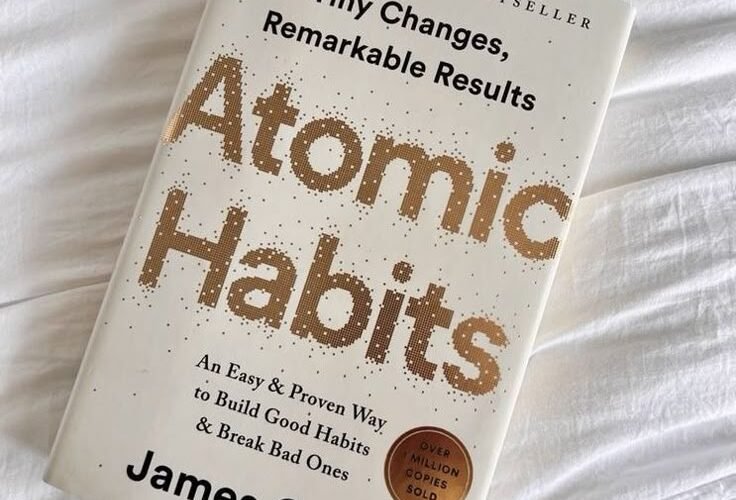Atomic Habits by James Clear: Still Relevant in 2025?

James Clear’s Atomic Habits, first published in 2018, continues to dominate bestseller lists and productivity circles in 2025. Its simple yet powerful message—small changes lead to remarkable results—resonates with individuals across professions, age groups, and cultures. The book remains a staple for those seeking to break bad habits, build positive routines, and lead a more intentional life. But in an era ruled by artificial intelligence, instant gratification, and digital overload, does Atomic Habits still hold value? The answer is a resounding yes—and here’s why.
Clear’s Core Philosophy Still Delivers
At its core, Atomic Habits teaches that consistent 1% improvements each day create massive long-term transformations. Clear emphasizes system-based thinking rather than goal obsession. This idea continues to strike a chord because people still chase outcomes while ignoring the daily patterns shaping their lives. In 2025, productivity tools have exploded, but they often fail to change people’s behavior. Clear’s focus on identity-based habits reminds readers that becoming the person they want to be starts with action—not dreams or apps.
Instead of saying, “I want to write a book,” Clear urges you to embody the identity of a writer by writing daily. This concept remains timeless. Many readers in 2025 still struggle to bridge the gap between goals and execution. Clear’s method offers that bridge.
The 4 Laws of Behavior Change Still Work
Clear lays out four laws for habit formation:
- Make it obvious.
- Make it attractive.
- Make it easy.
- Make it satisfying.
These rules provide a practical framework that works in every era. You can apply them whether you’re trying to wake up at 5 a.m., reduce social media use, or follow a workout plan. In 2025, when digital distractions have reached new heights and dopamine-driven design rules the app landscape, this framework becomes even more critical.
For instance, habit trackers and smart reminders now flood the market. Still, most people give up after a week. Why? Because the core habit loop remains broken. Clear’s method goes deeper than gimmicks—it teaches how to rewire the habit loop at the source.
Identity-Based Habits Gain Even More Relevance
In 2025, self-optimization dominates social media. Influencers push routines, diet plans, and success formulas daily. But behind the filters and productivity porn lies one question: “Who am I becoming?”
Clear’s model flips the traditional script. He tells you to start from your identity and align your habits accordingly. If you want to become a fit person, you must act like one consistently—even if it’s just taking a walk today. This shift toward identity instead of results brings long-term alignment. In today’s era of quick wins and short attention spans, his method grounds people in authenticity and long-term growth.
This also explains why therapists, life coaches, and business consultants still recommend Atomic Habits in 2025. It doesn’t just change behaviors—it transforms self-perception.
Action, Not Motivation, Drives Results
One of Clear’s strongest messages states that “you don’t rise to the level of your goals, you fall to the level of your systems.” In 2025, people often wait for motivation. They spend time watching productivity videos, listening to self-help podcasts, or using AI-powered habit trackers. But nothing works without consistent action.
Clear dismantles the myth of motivation and puts systems at the center. This insight remains crucial. Many people build ambition without scaffolding. Atomic Habits gives them the tools to build routines, not rely on willpower. In a world addicted to instant gratification, this lesson becomes even more important.
Scientific Foundations Ensure Lasting Impact
Atomic Habits doesn’t rely on personal anecdotes alone. Clear uses behavioral psychology, neuroscience, and habit research to support every principle. This scientific grounding gives the book credibility and relevance, even years after its release.
In 2025, behavioral science has advanced, but the fundamental truths behind habit formation remain unchanged. Human brains still crave reward. They still build routines based on cues, cravings, responses, and outcomes. Clear’s method aligns with how the brain naturally works. That ensures Atomic Habits stays timeless.
Even tech platforms building new habit-building apps in 2025 refer to Clear’s four-stage habit loop: cue, craving, response, reward. Whether designing features for fitness apps or mental health platforms, developers still turn to Atomic Habits as a guide.
Real-World Application Keeps It Fresh
Clear doesn’t leave readers with theory alone. He fills the book with real-life applications. Readers learn how to “stack habits,” design their environments, remove friction, and reinforce new routines. In 2025, these strategies apply even more broadly.
Remote work, hybrid lifestyles, and digital overload have shifted how people structure their days. Clear’s concept of “environment design” becomes crucial. If your phone sits on your desk, you’ll check it. If your workout shoes lie by the door, you’ll likely exercise. These practical tactics work in the home office as much as they do in a gym or studio.
Atomic Habits also works for teams and organizations. Leaders in 2025 continue using its principles to shape company culture, improve onboarding, and foster innovation. Habit stacking, identity alignment, and cue design help teams embed values into daily operations.
Social Proof Reinforces Its Staying Power
Atomic Habits sold over 15 million copies by 2023. In 2025, it still ranks on bestseller lists and receives fresh reviews every month. That consistent buzz isn’t just marketing—it’s because people apply it, see results, and recommend it.
From students to CEOs, everyone finds value in its pages. TikTok creators summarize its ideas in bite-sized videos. LinkedIn professionals cite it in leadership posts. Teachers use it in classrooms. Fitness trainers refer to it during consultations. That kind of widespread cultural impact ensures longevity.
When a self-help book crosses into education, business, health, and technology ecosystems, it evolves from a trend to a classic. Atomic Habits has done exactly that.
Critics Can’t Ignore Its Simplicity
Some critics argue that Atomic Habits states the obvious. But that simplicity is its superpower. People don’t need complex philosophies—they need actionable tools. Clear provides those tools with clarity and empathy.
Others say habit change requires deeper emotional healing. They have a point—but Clear never claims to replace therapy or introspection. Instead, he complements it with structure and action.
In 2025, when people battle burnout, anxiety, and overstimulation, Atomic Habits offers something rare: control through small steps. That quiet empowerment keeps it relevant.
Conclusion: Yes, It’s Still Relevant—and Even More Powerful
Atomic Habits didn’t fade with time—it matured. In 2025, it feels more essential than ever. The world changed dramatically since its publication, but people still seek transformation. They still struggle with consistency. They still want to take control of their time, energy, and attention.
James Clear gives them a map, not magic. He offers structure in a chaotic world. That structure still works—because human nature hasn’t changed. So yes, Atomic Habits remains relevant in 2025—and likely will for decades to come.













